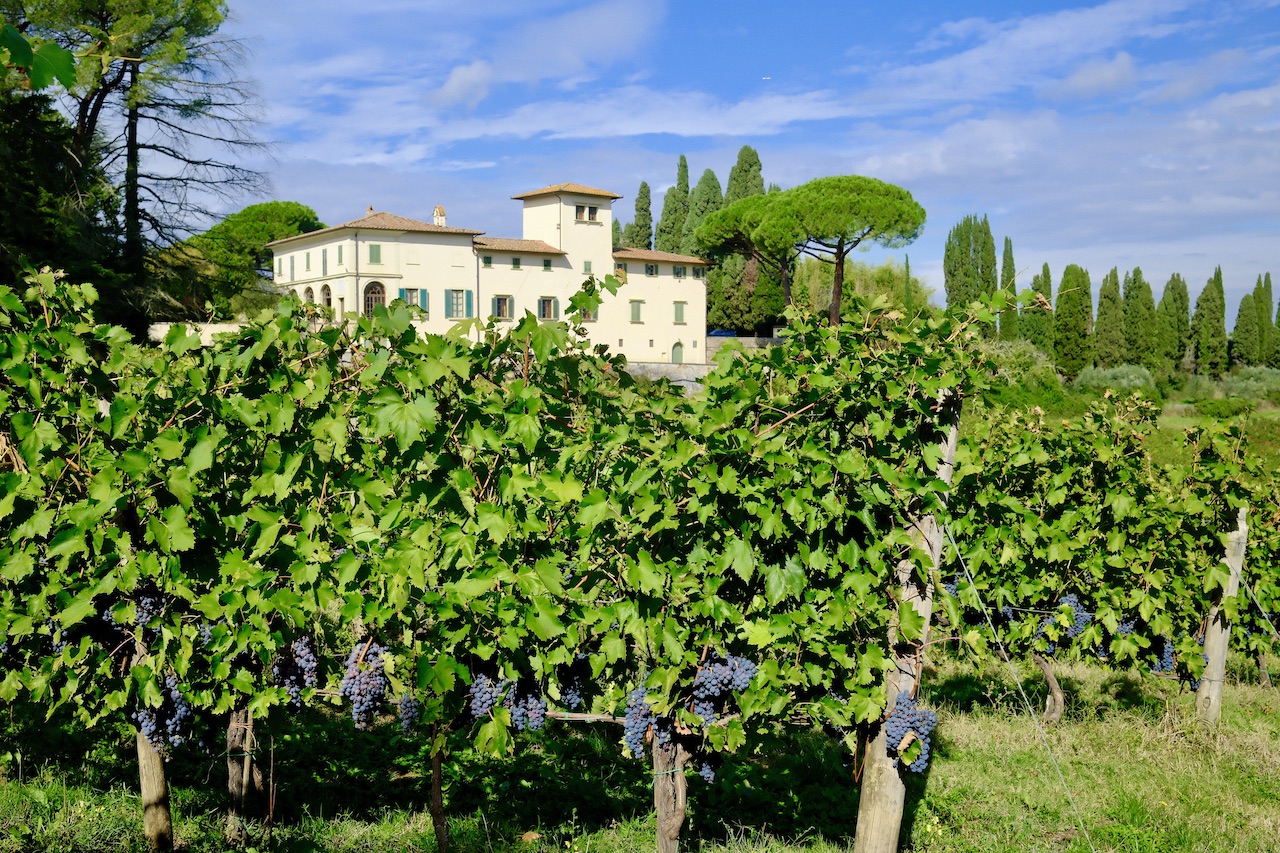Wine Tours in Tuscany - About Angie - +39 3333185705 - angie.chianti@gmail.com
Have you ever felt overwhelmed by all the complex wine terms you hear on a wine tasting tour?
Don’t worry. On our Tuscany wine tours, we’ll explain anything you want to know about the language of wine.
And we’ll start with this introduction to 10 helpful words about wine.
If you’ve ever wondered how a liquid like wine can have “body” or “legs”, this brief wine glossary is for you.
10 Helpful Wine Terms:
-
Body
Body in wine refers to how the wine feels in your mouth. A full-bodied wine feels thick and heavier like whole milk, while a light-bodied wine seems thinner, like skim milk or water. For example, Chianti is medium-bodied, while a Brunello is a full-bodied wine.
-
Legs
Wine legs are the droplets or tracks of liquid that form on the inside of a wine glass. Also known as “tears”, they are due to the slow evaporation of alcohol. A lot of wine legs may indicate higher alcohol content in the wine. But it really doesn’t mean anything about the quality of the wine.
-
Sweet
The wine term, “sweet”, indicates that there is sugar in the wine. The sugar may be leftover from when the grape juice was converted into alcohol or added later. Sweet wines, such as Vinsanto from Tuscany, are often served as dessert wines.
-
Fruity or fruit forward
Two words about wine that are often confused are fruity and sweet. The term “fruity” doesn’t mean that the wine is sweet, but that it is dominated by fruit flavors and aromas, such as strawberries or blackberries.
-
Dry
This is another wine term that can be puzzling. A “dry” wine is one that doesn’t have any residual sugar after fermentation. In reality, a dry wine simply means a wine that is not sweet.
-
Tannins
Tannins come from the skin, seeds and stems of the grape. The term “tannic” is often mixed up with “dry” because tannins create a drying sensation in the mouth. Tannins add a bitter taste to red wines, which increases complexity (see definition below).
-
Acidity
Acidity refers to how sour a wine tastes. It depends on the ripeness of the grapes. If unripe grapes are used, the wine may be tart or acidic. If there isn’t enough acidity, the wine will taste flat.
-
Complex
This is a rather mysterious wine tasting term that simply means the wine has different flavors that develop as you taste it. A complex wine will be rich in flavors and have a good balance of acidity, tannins and sweetness.
-
Finish
The finish refers to the taste and texture left in your mouth after you swallow the wine. A longer finish, where the flavor lingers on your palate, usually indicates good quality.
-
Vintage
The vintage of a wine is the year in which the grapes were harvested and not the year the wine was released. It’s useful to know because some harvest years turn out better than others.
There you have it – – a quick guide to wine tasting terms. We may use some of them if you join us on a wine tour from Florence, but our focus will be on enjoying the wine and the beautiful Tuscan scenery.





